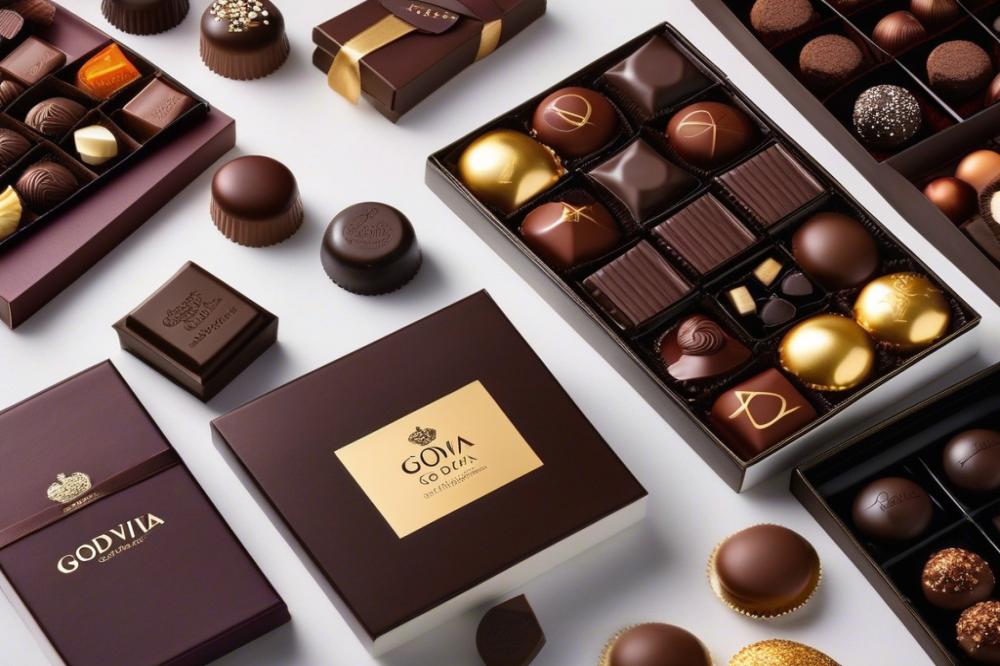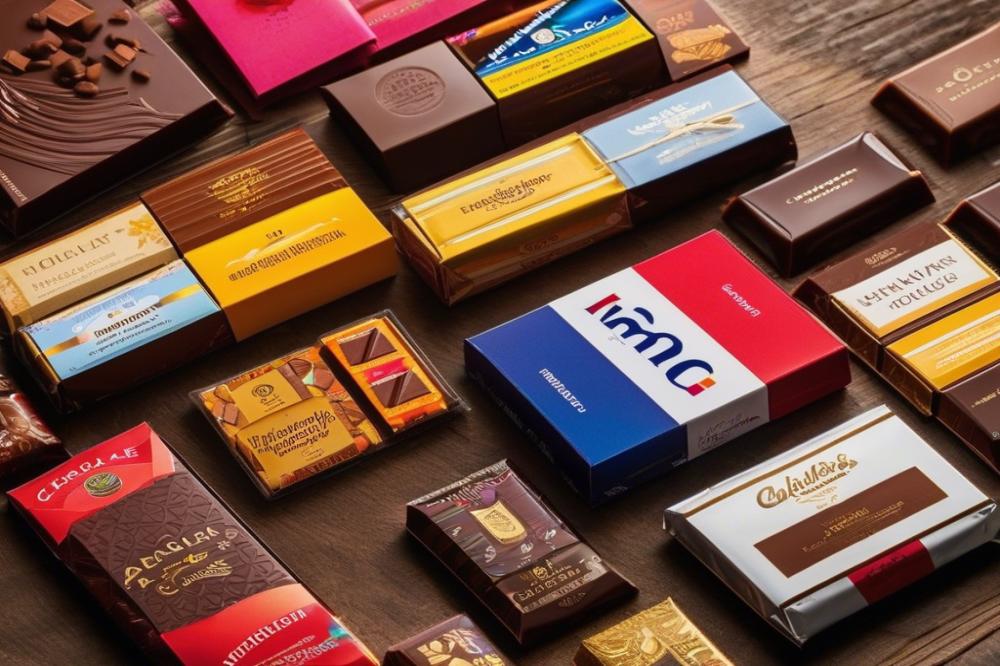How Oreos Became the World’s Most Iconic chocolate biscuit
The world of chocolate biscuits is vast and varied. Many countries have their own versions, each with distinct flavors and textures. People enjoy these sweet treats as snacks, desserts, or even comfort food. Over the years, the snacks have evolved, appealing to different tastes and preferences. Among this diverse array of cookies, one brand stands out with remarkable prominence.
Oreo has established itself as a leading chocolate biscuit globally. Launched in 1912, this cookie quickly captured the hearts of consumers with its delightful combination of rich cream filling and dark chocolate wafers. The brand’s unique taste became a sensation, creating a legacy that continues to thrive today. Innovative marketing strategies have significantly contributed to this success, attracting fans from all walks of life.
Many may not realize how significant Oreos have become in various cultures. They are more than just a snack; they evoke nostalgia for countless individuals. The act of dunking these cookies into milk has become a cherished ritual for many families. As the brand expanded, new flavors emerged, further enhancing its global popularity. This has encouraged people everywhere to share their love for this beloved snack food. Clearly, Oreos have secured a special place in the hearts and minds of cookie lovers around the globe.
The history of Oreo

The Oreo cookie has roots that date back to the late 19th century. In 1912, a unique chocolate wafer sandwich filled with cream debuted. Nabisco, the company behind this creation, was founded as the National Biscuit Company in 1898. Initial sales were focused mainly in New York City. Success started to build slowly, yet steadily.
As demand grew, marketing strategies took center stage. The packaging was designed to catch the eye. Bright colors and bold lettering made the product stand out. Furthermore, advertisements showcased the fun of dunking cookies in milk. This clever promotion helped solidify the treat’s place in American snack food culture.
Throughout the decades, the cookie underwent significant growth. The recipe saw changes to meet consumer tastes. In 1937, the Oreo adopted its iconic black and white colors. This design has become a symbol recognized around the globe. Flavors became more varied, with the introduction of double-stuffed versions and seasonal specials.
Key milestones punctuate the cookie’s journey. By the 1980s, international expansion began in earnest. Countries around the world embraced the cookie, sparking global popularity. New flavors were introduced to cater to local preferences. Variations included green tea in Asia and birthday cake in the United States.
With the rise of social media, nostalgia found a new outlet. Fans share memories associated with the beloved snack. Innovation remains a constant theme, with collaborations pushing boundaries even further. Limited editions and surprising flavors continue to surprise lovers of the treat.
Innovative Marketing Strategies

Early Advertising Campaigns and Their Impact
From the beginning, marketing played a crucial role in shaping the brand’s identity. Early advertising campaigns showcased the cookie’s history and simple pleasure. Creative slogans captured attention, making them memorable. These efforts generated excitement and drew consumers in. Print ads often featured families enjoying cookies together, promoting a sense of nostalgia. This approach connected with audiences on an emotional level, helping the brand build a lasting presence in snack food culture.
The Role of Social Media in Modern Marketing
Social media has transformed marketing in recent years. Platforms like Instagram and Twitter allow brands to connect directly with consumers. Engaging posts, pictures, and videos create buzz around new products and flavors. Viral marketing campaigns generate widespread attention, often flooding timelines with mouth-watering images. Two-way communication fosters a personal connection. Fans share their experiences and brands listen, amplifying the sense of community among cookie lovers around the world.
Unique Promotional Strategies Like Limited Edition Flavors
Limited edition flavors have become a hallmark of brand expansion. These special releases tap into the excitement of trying something new. Seasonal flavors pique interest during holidays, like peppermint during winter. Consumers eagerly anticipate these offerings, often creating a sense of urgency. The thrill of limited availability encourages people to purchase cookies faster. Such strategies broaden appeal while celebrating favorite traditions through flavors.
Collaboration with Influencers and Brands
Collaborations with influencers add a fresh dynamic to marketing efforts. Popular social media figures showcase their love for cookies to their large audiences. These partnerships can breathe new life into a classic snack. Brands also team up with other companies to create exciting flavor combinations. Collaborations might include dessert chains or even other food brands. Innovation in these partnerships plays a key role in keeping cookies relevant on modern platforms.
Brand Expansion and Global Popularity

Oreo’s Entry into International Markets
In the early 20th century, the creation of iconic cookies sparked interest around the globe. As history unfolded, this classic snack food ventured into new territories. Soon, it reached Canadian shelves. That expansion marked the beginning of a global phenomenon. Several countries embraced this chocolate biscuit, leading to wider recognition.
Adapting Oreos to Local Tastes and Preferences
Tastes can vary dramatically from one region to another. To appeal to diverse audiences, the brand introduced local flavors. For instance, matcha Oreos became a hit in Japan. In China, a red bean variant garnered attention and admiration. Those products reflect an understanding of consumer preferences and creativity. Dunking these cookies in milk remained a common practice, despite the flavor twists.
Partnerships and Co-Branding Opportunities
Collaboration has also played a crucial role in expansion. The brand has teamed up with popular franchises and food companies, creating special editions. For example, dessert-themed collaborations have resonated well with fans. These partnerships attract attention and create excitement in the market. Classic tastes meet pop culture in this innovative approach. Nostalgia often drives consumers to share their love for these cookies.
Comparison with Other Iconic chocolate biscuits Worldwide
Oreo’s journey stands out, yet other chocolate biscuits have made their mark too. In the UK, the digestive biscuit enjoys a devoted following. Meanwhile, the Italian biscotti offers a different texture and flavor profile. Each product appeals to loyal fans in unique ways. These comparisons highlight the diversity of chocolate snacks around the globe. Success depends not just on flavor, but also on brand recognition and history.
Exploring Oreo Flavors and Innovations
Over the years, this chocolate biscuit has introduced a wide array of flavors. Beginning with the classic cream filling, it has expanded to include options like mint, red velvet, and birthday cake. Each flavor taps into a different taste preference, attracting fans of all ages. Seasonal variations add a twist, making some flavors available for a limited time. For example, pumpkin spice emerges every fall, evoking nostalgia and excitement.
The Role of Seasonal and Special Editions
Seasonal and special edition flavors play a crucial role in maintaining interest. Consumers eagerly await new releases, often associated with holidays or events. Valentine’s Day brings red crème, while Halloween fans enjoy orange crème cookies. These innovations leverage brand expansion strategies. Curious snack food lovers often rush to stores to grab these exclusive offerings.
Innovations in Packaging and Product Presentation
Packaging has also seen significant innovations throughout its history. Bright colors and eye-catching designs enhance the appeal of these snacks. Individual packs cater to on-the-go lifestyles, making it easy to enjoy these cookies. Limited edition packaging often sparks conversations, just like the flavors. Creative visuals invite both loyal customers and newcomers to explore what’s inside.
Various Formats Available
Different formats of this beloved cookie have also emerged. Thins, for instance, offer a lighter option for those who want to indulge but with fewer calories. Additionally, the introduction of stuffed cookies adds another layer of excitement. Not to mention, there are also creams available for baking enthusiasts. Each format caters to specific cravings, further enhancing the cookie’s global popularity.
The Art of Dunking and Snack Culture
Dunking cookies in milk is more than just a habit; it has become a cultural ritual for many snack lovers. This practice elevates the experience of enjoying treats and deepens the connection to the flavors contained within. Many recall their childhood memories of carefully dipping those dark cookies, waiting for the right moment to pull them out before they crumble. Over the years, this simple act has played a crucial role in creating a bond among fans around the world, turning a common snack into a shared experience.
Significance in the snack food industry cannot be overstated. This cookie has carved out a permanent place on grocery store shelves and in the minds of consumers. With clever marketing strategies over the decades, this brand has positioned itself as a leader, adapting to trends without losing its core appeal. The combination of cookies and cream has become synonymous with comfort, making them a staple in households across many countries.
Innovation has also been key in shaping cookie trends. New flavors consistently push boundaries and entice consumers to try something different, from seasonal variations to unique limited-edition releases. These creative twists attract both old fans and new customers alike, keeping the brand fresh in a competitive landscape. Global popularity highlights how a simple cookie can resonate across different cultures, opening doors for experimentation with local tastes.
The connection people feel can often be traced back to nostalgia. Many adults remember eating cookies as children, a delightful connection that often leads to them sharing the experience with the next generation. Store aisles filled with these products often serve as a time capsule, sparking warm memories and the joy associated with those little moments. Beyond the product itself, Oreo represents a shared history—a bond created through countless family gatherings and friendly get-togethers.
Snack consumption has evolved due to influences from this brand. Its role has expanded to include everything from desserts to gourmet recipes, showcasing versatility that few others can claim. Dunking is just one of many ways to enjoy the cookie, but it perfectly illustrates how people personalize their snacks, turning routine moments into cherished rituals. Ultimately, the appeal lies not just in taste, but in the entire experience surrounding it.
Reflecting on the Journey
Recapping the journey reveals how a simple chocolate biscuit rose to iconic status. Launched in 1912, it quickly connected with consumers due to its perfect balance of flavors. Creative marketing strategies helped it stand out in a crowded snack market. Over the decades, it adapted to changing tastes and trends, introducing countless variations. Unique flavors and special editions kept the brand relevant, allowing it to reach new audiences.
The legacy of this beloved treat is impressive. It has cemented itself in the hearts of people worldwide. Today, it is more than just a biscuit; it symbolizes traditions and shared experiences. Whether it’s dunking in milk or stacking for fun, many have created memories around it. Such moments shape its place in culture and everyday life.
Looking ahead, the future seems bright. With ongoing innovations and new collaborations on the horizon, there’s potential for more exciting offerings. As lifestyles evolve, the brand will likely adapt, maintaining its relevance for future generations. The tale of this chocolate-filled delight continues to unfold.
The impact on global snack culture remains undeniable. It transcends borders and connects people. Through history, it has broken down barriers and united snack lovers everywhere. Its influence stretches far beyond the cookie aisle. Each bite carries the essence of nostalgia, familiarity, and joy. That simple biscuit has become a phenomenon, redefining what it means to enjoy a snack.



